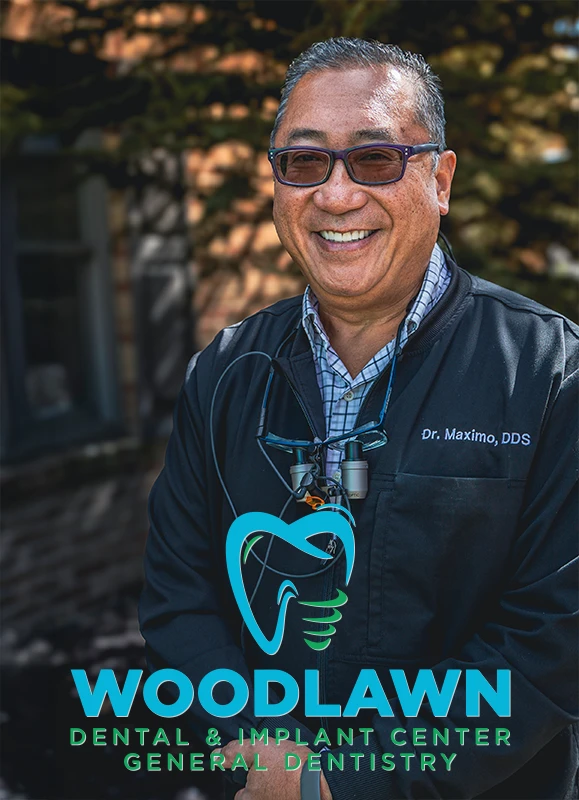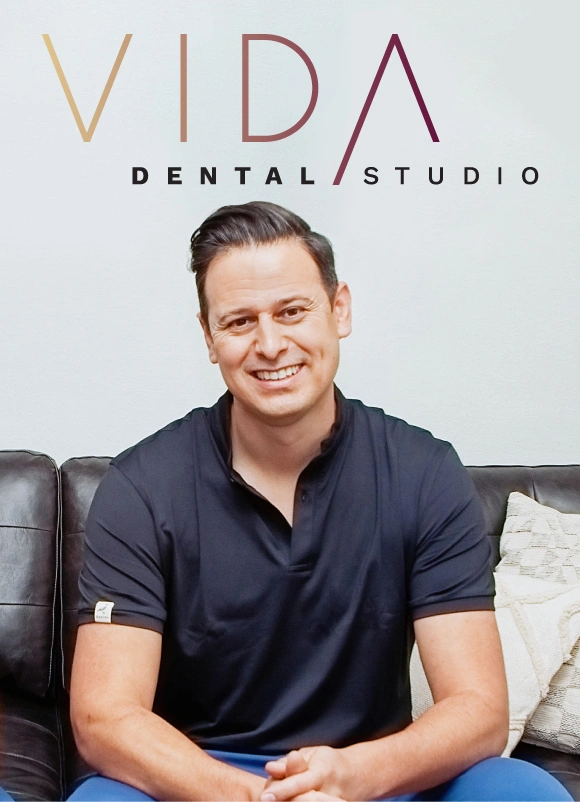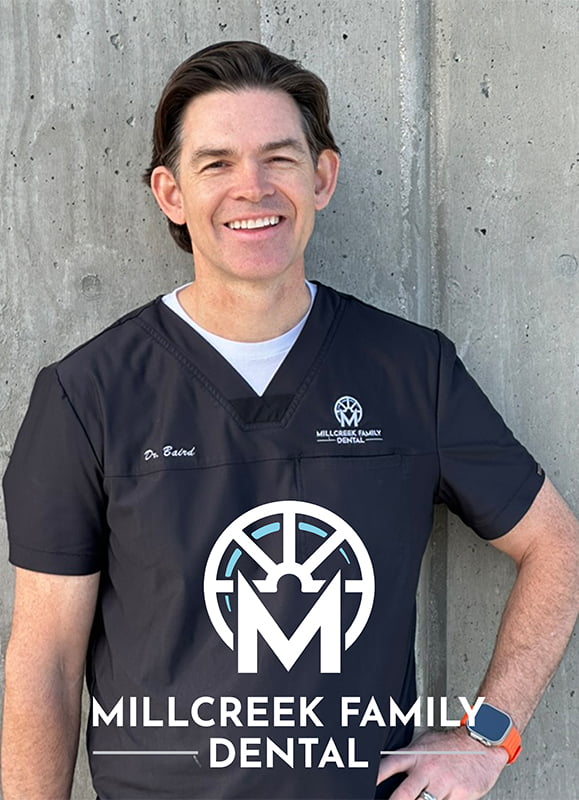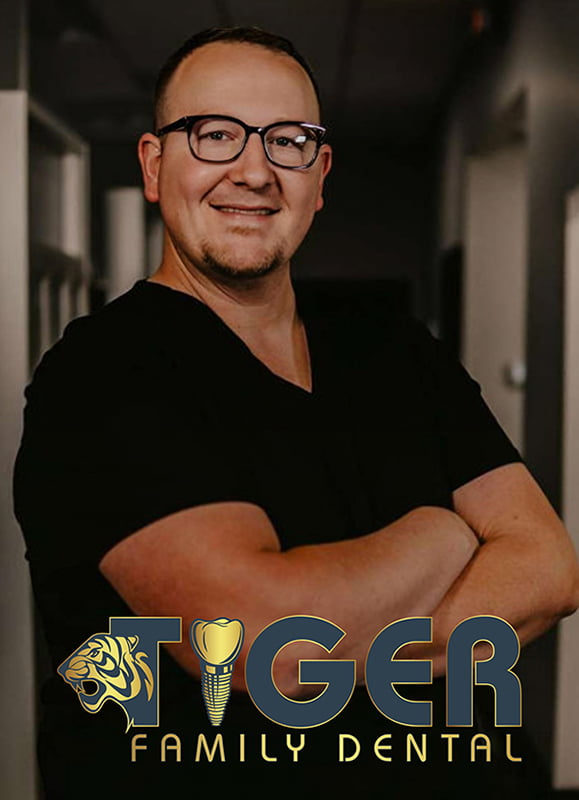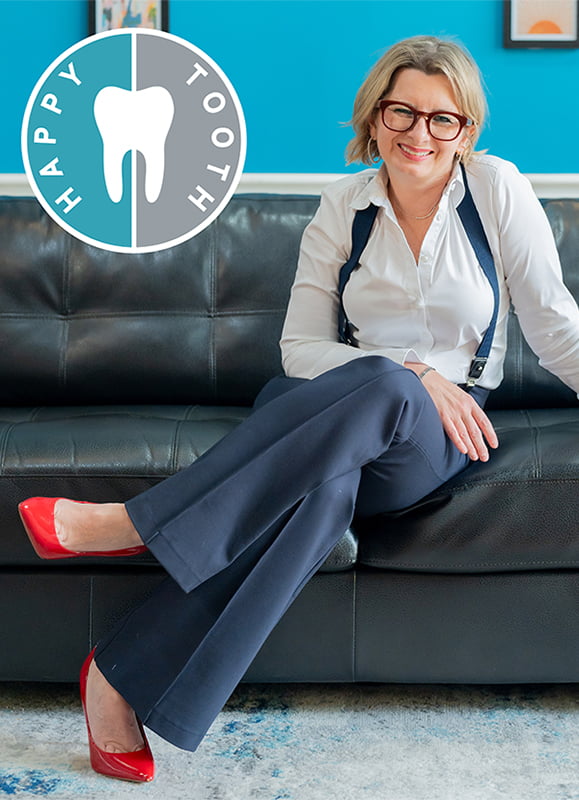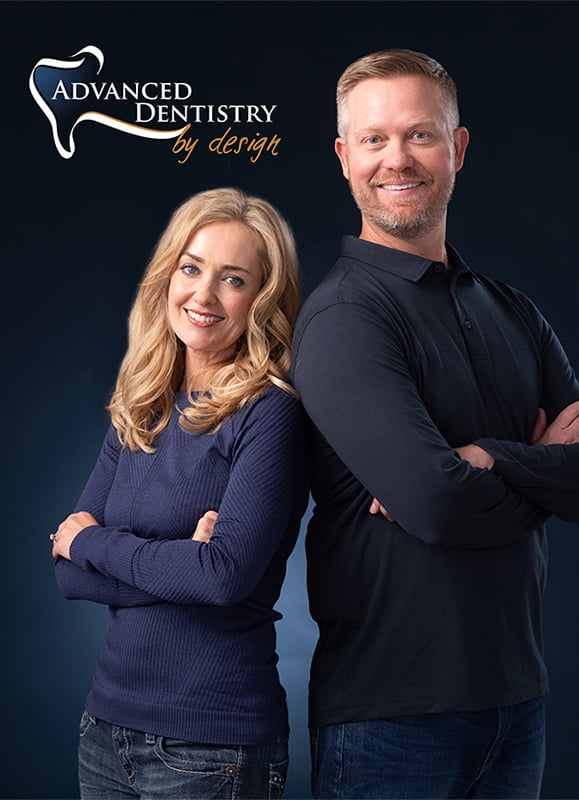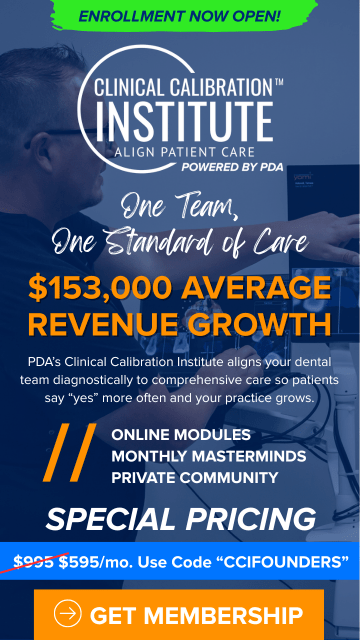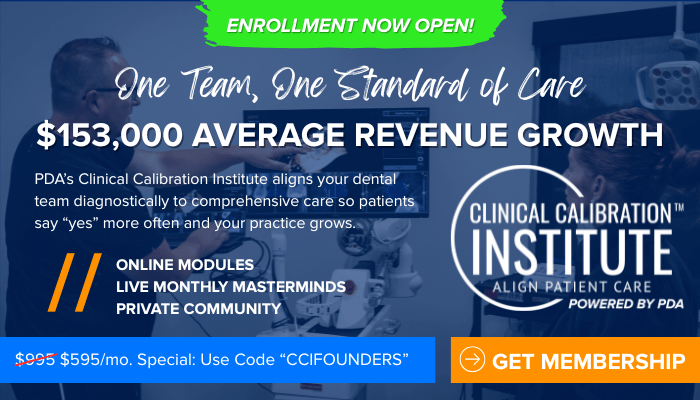Episode 105 – Requested Replay: Why Is EBITDA So Important?
“If you don’t know where you’re going then you better enjoy the ride, because you’re never going to get there.” ~ Victoria Peterson
Do you know where your business is going?
Have you ever been thinking about your business and found these questions chasing themselves around your brain: Should I sell? Should I buy? Can I afford this? Can I retire? Should I hire? Should I expand?
The questions are endless…and the answers are elusive.
Without a final end goal in mind, entrepreneurial dentists like you often end up in a cycle of mental loops around these questions. It will drive you crazy.
So let’s put a stake in the ground.
Today I am taking the guesswork out of your practice and giving you three things you need to know as you build your dental practice into an asset that will support your future, including:
- The 1 question you need to answer
- An easy equation to know what you need to bring in every month
- Why your EBITDA (earnings before interest, taxes, depreciation, and amortization) number should be your driving force
EPISODE TRANSCRIPT
Regan 0:00
Hi, Dr. Regan Robertson, CCO of Productive Dentist Academy here and have a question for you. Are you finding it hard to get your team aligned to your vision, but you know, you deserve growth just like everybody else? That’s why we’ve created the PDA productivity workshop. For nearly 20 years PDA workshops have helped dentists just like you align their teams, get control of scheduling, and create productive practices that they love walking into every day. Just imagine how you will feel when you know your schedule is productive, your systems are humming, and your team is aligned to your vision. It’s simple, but it’s not necessarily easy. We can help, visit productivedentist.com/workshop, that’s productivedentist.com/workshop to secure your seats now.
Victoria Peterson 0:46
We’ll start from the point that your business is built to do one thing and one thing only and that is to provide a return on investment for you as well as a lifestyle of your choice. Think about that, again, your business is designed to provide owner profits and lifestyle. Otherwise, seriously, you could sell it and go work as an associate, once again, be highly productive, bring home a great paycheck, and not have to deal with a headache. So what do we need to do in order to poise this business to provide that one thing, to give you your best life today, and prepare you to someday walk away financially free?
Narrator 1:33
Welcome to Investment Grade Practices podcast where we believe private practice dentists deserve to get the lifestyle today while building an asset for tomorrow. Join your host Victoria Peterson to design the practice of your dreams and secure your financial independence. Let’s get started.
Victoria Peterson 1:57
Continuing with our four quadrants of building an Investment Grade Practice, today, we’re going to focus on asset building it is the second quadrant in your plan. So last episode, we worked on building a cultural Northstar. This tells you where you’re going and why, actually tells you why you’re going in that direction. Today, we’re going to talk about where you’re going. So if you don’t know where you’re going, well, you just better enjoy the ride, because you’re never going to get there. There’s some really cool research that put a lot of, puts some people inside a round dome building. It had no corners, no doors, no markers, and they asked them to walk in a straight line and it became physically impossible to do so. So without a focal point, I suspect that entrepreneurs with no end game kind of mirror this in their head, you know, these mental circular loops of should I buy the building? Should I keep renting, or should I just expand my space? Should I hire an associate, get a partner, sell my practice today, and work for somebody else? That kind of mental loop can go on and on and on and I’ll drive you seriously crazy as an entrepreneur because we’re also high idea generators. So how do we put a stake in the ground? Well, starting from the point that your business is built to do one thing and one thing only, and that is to provide a return on investment for you, as well as a lifestyle of your choice. Think about that, again, your business is designed to provide owner profits and lifestyle. Otherwise, seriously, you could sell it and go work as an associate, once again, be highly productive, bring home a great paycheck, and not have to deal with the headache. So what do we need to do in order to poise this business to provide that one thing, to give you your best life today and prepare you to someday walk away financially free? And to understand this question, actually, it’s really simple. All you have to do is honestly answer one question. What is your annual personal spending needs?
Victoria Peterson 4:21
Now forget about the business debt and all the rest. Not business debt, personally, what do you and your family need to live? Well, don’t skimp, write it all down. The mortgage, the insurances, the taxes, the daycare, the college funding, the private schools, the three vacations a year, you know, your closet of designer clothes, whatever it is, how much are you really spending each and every month? Is it $10,000, 15? Do I hear 20, 25? Is it 30? Once you know this number, and I know, this can be scary. Particularly if you come home and you’re exhausted, you’re working your fanny off. The last thing you want to do is sit down with a checkbook or a budget and start looking at numbers. We often shy away from numbers in dentistry and without looking at it, though you, you build up this false fear. So take an honest look. Let’s take an example of $15,000 a month, pretty moderate leaving for a dentist, and your average spending is $180,000. What would it be like? Remember, we’re in the section of building assets here. What would it be like to build up enough assets so that you got a check for $15,000 a month, every month, for the next 30 years, without picking up a handpiece. Now, that might sound crazy to some of you, but this is exactly what I’ve been helping doctors do for the last 30 years, this is proven, I have helped more doctors finally become financially free that I can even count, they don’t necessarily retire, what happens is they hit that number and they continue to work because it’s fun, because it’s enjoyable, because the pressures off. So here’s the quick math and I will put this table in the show notes for you as well. If you needed 15,000 a month, 180,000 a year in spending, then you would need to accumulate $5.4 million in assets. If your current monthly spending is 25,000, then you need 300,000 a year in investment income. So you would need to accumulate 9 million. Now there is this piece where you can accelerate your debt reduction, right, your mortgage goes away. Certainly, you want to get rid of all your credit card debt and things like that, but even with that said, I would still target these types of numbers because here’s my experience, I paid my house off, what did I do? I bought a vacation home.
Victoria Peterson 7:07
When I got that one paid off, what did I do? I bought an investment property, things just tend to go in patterns what you like you love and you keep doing it. So the spending patterns that I had in my 40s are still the spending patterns I have in my 60s and they haven’t vary that much. Even though my economics went up, we do have this pattern comfort level. So I would just use the table that we’re going to put in the show notes, find your number. What this does is it gives you power to plan. Most of us set our annual business growth goals by saying I did 1.2 million this year therefore next year, I don’t know let’s grow to 1.3 million. There’s no rhyme, there’s no reason, the answer is simply more. I want to do more next year than I did last year and when we look at our P&I and our year over year, we go “Yay, we did more,” but will more get you to where you want to go and the answer oftentimes it’s no. In fact, 95% of dentists cannot retire and maintain their lifestyle and I venture to say it’s because 95% have this I need more type of goal setting. So you want to figure out first and foremost, what is my need and what is my long-term asset build? Then you can go in and start thinking about what is the value of my practice and we cover that in a lot of episodes here, what is really affecting your multiple your EBITA things like that. I’ll also put up a link that you can go in and estimate your practice value. For many doctors, that’s going to be their number one asset, but if you do it right, and you’re growing at a rate of gosh, our average client over the last 15 years has grown on average 27% year over year and when we set up our financial freedom calculator and our practice value calculator, we actually set it at about 12% because that rate of growth is more than twice what the average dentist grows. So go on, check out the practice value and you can see over the next five years, growing your practice using Investment Grade Practice methodologies, how far you will go in just five years compared to business as usual.
Victoria Peterson 9:55
So we’re on module number two step number two of building on Investment Grade Practice asset building. We started out with building your cultural Northstar and in the assets so there’s the number one thing that you can do today is to focus on your EBITA, your net profits and if you’ve not had your CPA organize your chart of accounts so that it’s easy to see all of your spending and then the the EBITA, that’s a financial term. That’s why CPAs don’t always set it up that way. It’s not an accounting term. If you have, if you have a chart of accounts, and you look at it, and you look at your profit and loss, and the first thing at the top is advertising, and the second one is amortization, and then automobile, you know that it’s organized alphabetically, that may be functional for tax purposes, and what your CPAs doing, but it’s not a functioning management document. So if you want, you can send me your p&l, I’ll take a look at it and I’ll let you know are you set up to manage your practice towards building value based on assets. We want to grow your practice assets and the biggest asset for practice valuation is net cashflow, EBITA, and setting up your p&l on a great basis will help you month to month to know what’s happening. So that’s where we’re at with 20, with 15% EBITA, meaning you’ve got a $1.5 million practice, and after your salary, you still have $300,000 in profit, then you are Investment Grade, that’s the minimum definition, you have 15% in net profits. If you’re 20%, man is that good, you are going to get a higher multiple than if you had 15 and if you’re at 22% or above, you are a unicorn and you will get top dollar in your EBITA. So if you’re sitting there going through your desk and you’ve got an unsolicited offer from a DSO saying, “Hey, I want to buy your practice.” Do not, do not respond to that until you know for sure what your practice is truly worth and if you’d like a free practice valuation just hit me up at victoria@productivedentist.com We’ll get you hooked up so that you understand what your practice is really worth today. The extra cash along the way helps you buy the building helps you pay down debt. It gives you the leeway to offer in-house patient financing where you can charge interest and start monetizing your accounts receivable. So it becomes an asset rather than a liability. Maybe you want to open a lab within your practice, maybe you want to open an assisting school, all of these new assets can be created from the profits along the way. So I’m not saying that on that 1.5 million, you have 300,000 in profits. You don’t ever spend it. Of course you do. You’re going to take that money though, and let it continue to make money for you rather than spending it on cars, clothes, and jewelry. Let’s put it to work and asset-building ways. That’s our, that’s our tip for today on building an Investment Grade Practice is think about asset building. It is my practice itself set up as a great asset? Am I taking the profits from that asset to invest in other assets, stocks, bonds, real estate, other businesses? So that when I’m ready to hang up the handpiece I know what my financial freedom number is, that number where my money will last 30 years month after month after month without me picking up the handpiece and what are the assets I’m going to build to help me get there. Thanks for joining me. I look forward to chatting with you again next week.
Narrator 14:01
Thank you for tuning in to this episode of Investment Grade Practices podcast. If you find value in this episode, help us spread the word by passing it along to a dental friend. Subscribe and give us a Like on iTunes or Spotify. Learn more about building your Investment Grade Practice at productivedentist.com Today
Have a great experience with PDA recently?
Download PDA Doctor Case Studies
